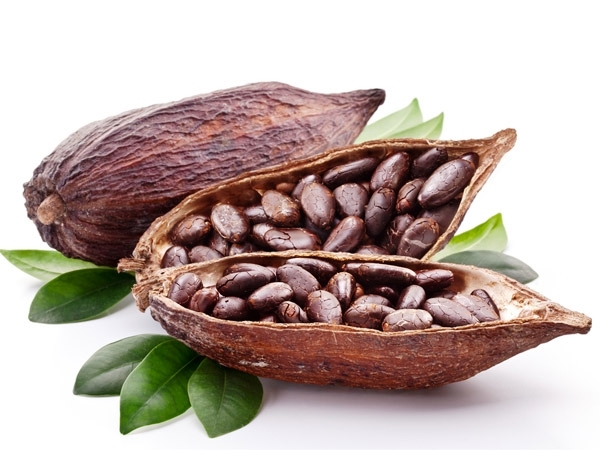Краткие сведения
Подробное описание товара
Composition and Properties
A cocoa pod (fruit) has a rough, leathery rind about 2 to 3 cm (0.79 to 1.18 in) thick (this varies with the origin and variety of pod) filled with sweet, mucilaginous pulp (called baba de cacao in South America) with a lemonade-like taste enclosing 30 to 50 large seeds that are fairly soft and a pale lavender to dark brownish purple color. Due to heat buildup in the fermentation process, cacao beans lose most of the purplish hue and become mostly brown in color, with an adhered skin which includes the dried remains of the fruity pulp. This skin is released easily after roasting by winnowing.
Verities
The three main varieties of cocoa plant are Forastero, Criollo, and Trinitario. The first is the most widely used, comprising 95% of the world production of cocoa. Cocoa beans of the Criollo variety are rarer and considered a delicacy.[17] Criollo plantations have lower yields than those of Forastero, and also tend to be less resistant to several diseases that attack the cocoa plant, hence very few countries still produce it. One of the largest producers of Criollo beans is Venezuela (Chuao and Porcelana). Trinitario (from Trinidad) is a hybrid between Criollo and Forastero varieties. It is considered to be of much higher quality than Forastero, but has higher yields and is more resistant to disease than Criollo.
Usage
People around the world enjoy cocoa in many different forms, consuming more than 3 million tons of cocoa beans yearly. Every consumer has a unique taste and preferences of the end product. Once the cocoa beans have been harvested, fermented, dried and transported they are processed in several components. Processor grindings serve as the main metric for market analysis. Processing is the last phase in which consumption of the cocoa bean can be equitably compared to supply. After this step all the different components are sold across industries to many manufacturers of different types of products.
Global market share for processing has remained stable, even as grindings increase to meet demand. One of the largest processing country by volume is the Netherlands, handling around 13% of global grindings. Europe and Russia as a whole handle about 38% of the processing market. Average year after year demand growth has been just over 3% since 2008. While Europe and North America are relatively stable markets, increasing household income in developing countries is the main reason of the stable demand growth. As demand is awaited to keep growing, supply growth may slow down due to changing weather conditions in the largest cocoa production areas.
Many different sorts of products can be derived from cocoa beans.
The husks of cocoa pods and the pulp, or sweatings, surrounding the beans and the cocoa bean shells can be used. Some examples of these uses are:
Animal feed from cocoa husk - As pelletised dry 100% cocoa pod husk, it can be used as an animal feed. The animal feed is produced by first slicing the fresh cocoa husks into small flakes and then partially drying the flakes, followed by mincing and pelleting and drying of the pellets.
Production of soft drinks and alcohol - In the preparation of soft drinks, fresh cocoa pulp juice (sweatings) is collected, sterilised and bottled. For the production of alcoholic drinks, such as brandy, the fresh juice is boiled, cooled and fermented with yeast. After 4 days of fermentation the alcohol is distilled.
Potash from cocoa pod husk - Cocoa pod husk ash is used mainly for soft soap manufacture. It may also be used as fertiliser for cocoa, vegetables, and food crops. To prepare the ash, fresh husks are spread out in the open to dry for one to two weeks. The dried husks are then incinerated in an ashing kiln.
Jam and marmalade - Pectin for jam and marmalade is extracted from the sweatings by precipitation with alcohol, followed by distillation and recycling of the alcohol in further extractions.
Mulch - Cocoa bean shells can be used an organic mulch and soil conditioner for the garden.
нет данных о компании
Пожалуйста авторизируйтесь чтобы написать отзыв
Отзывы клиентов
- Отзывов пока нет






